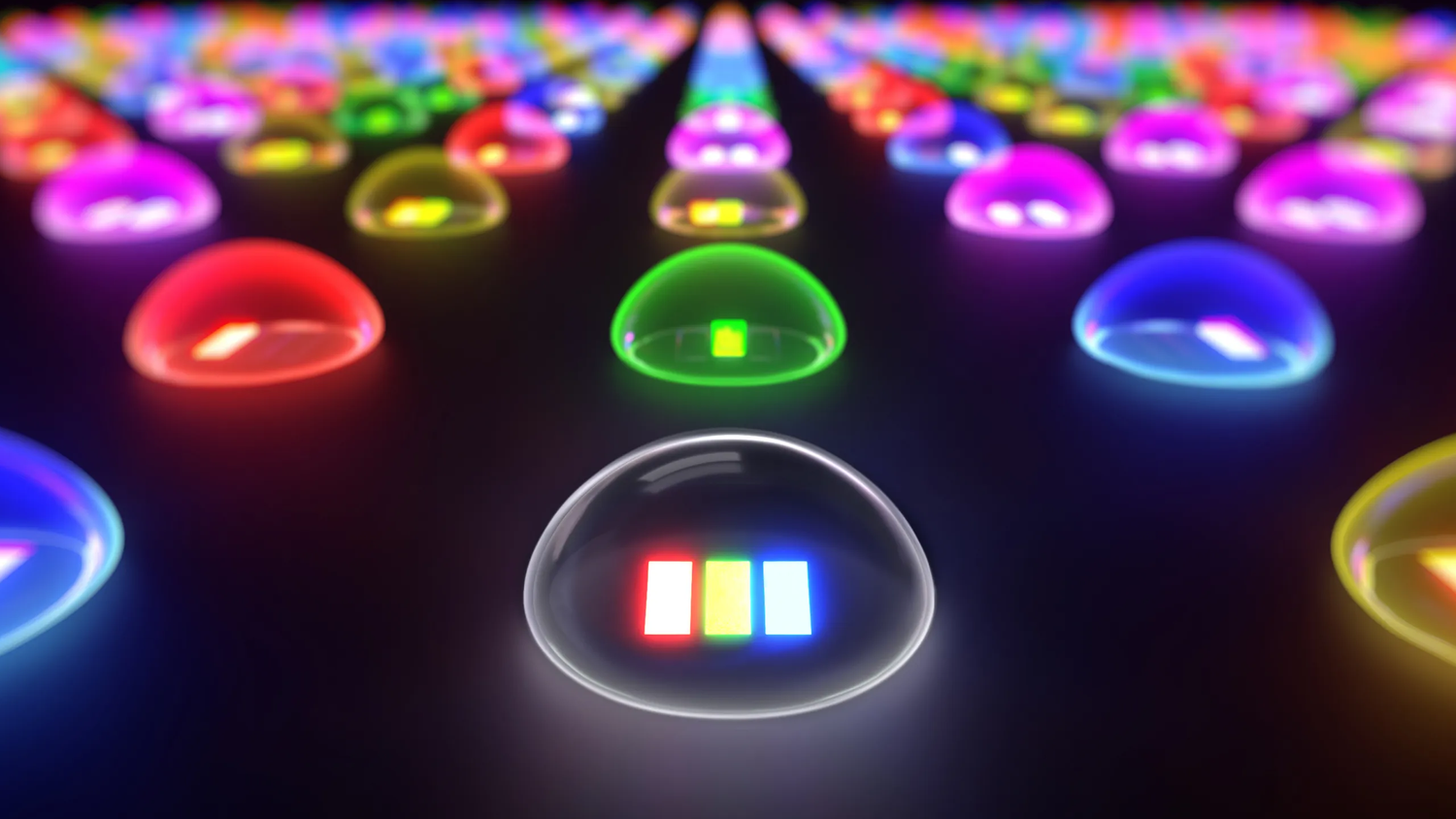Abstract
- RGB mini-LED splits the white backlights of standard mini-LED into pink, inexperienced, and blue diodes, permitting for extra colour accuracy.
- This accuracy is so excessive that it tops what’s potential with the most costly quantum-dot OLED TVs, even when OLED retains a distinction benefit.
- Proper now RGB mini-LED is absurdly costly, costing upwards of $20,000. Economies of scale ought to push that all the way down to cheap ranges.
I am really not in a rush to purchase a new TV, and I encourage most individuals to stay with what they have, so long as it continues to do what they want. I purchased a Hisense mini-LED set final yr that is not solely visually spectacular, however greater than able to dealing with HDR streaming and 3D gaming. My solely actual grievance is that its default distant cannot routinely management the amount of my Sonos Ray soundbar. In truth, if anybody at Hisense or Sonos is listening, hit me up about the very best resolution.
I am at all times holding tabs on new TV applied sciences, nonetheless, each for skilled causes and my private finances. One piece of show tech that popped onto my radar just lately is RGB mini-LED, also referred to as micro-RGB. On the floor, it does not sound a lot completely different than what I’ve now — however in a couple of years, OLED TVs might be demoted from the gold commonplace to a finances choice, very similar to plasma units had been. I will clarify each that and what it’s essential to find out about RGB mini-LED on the whole.
What’s RGB mini-LED?
Greater than easy evolution
To clarify this, I must step again a bit and discuss typical LCDs (liquid crystal shows). Any trendy LCD will depend on a number of LED (light-emitting diode) backlights to really current a picture. With out a backlight, an LCD is completely ineffective — you may’t see something.
As a result of a single backlight gives little or no distinction, the pattern with LCDs has been in direction of an ever-increasing variety of LEDs, permitting extra areas of any picture to be dimmed for deeper (although not complete) blacks. Newer TVs are outfitted with lots of of LEDs, usually grouped collectively right into a smaller variety of dimming zones.
The first benefit to RGB mini-LED is not distinction — it is colour copy.
Mini-LED takes this a step additional. As a result of it makes them dramatically smaller, it is potential to cram hundreds or tens of hundreds of LEDs right into a show panel. The result’s so good that in lots of circumstances, it is troublesome to inform the distinction versus OLED, even supposing OLED permits particular person pixels to modify on and off. You may even favor mini-LED, since OLED units cannot get as vivid. OLED is superior in a darkened room — however mini-LED can win the day when your TV has to compete with ambient gentle.
RGB mini-LED swaps white diodes for separate pink, inexperienced, and blue items, that are additionally smaller than earlier than (therefore micro-RGB as an alternate identify). The first benefit to this is not distinction, nonetheless, it is colour copy. As a result of every colour channel is independently changeable, RGB mini-LED TVs can obtain as a lot as 95 to 100% of the BT.2020/Rec. 2020 colour gamut. As a body of reference, it is unlikely that an costly quantum-dot (QD) OLED TV will obtain greater than 92% of these colours.
Can the common particular person choose up the distinction between 92 and 95%, and even 90 and 100%? In all probability not. Certainly, OLED will proceed to reign supreme for individuals who worth distinction and element, at the very least till micro-LED turns into reasonably priced. However RGB mini-LED does kick one other leg out from underneath OLED, and will (for a time) turn out to be the expertise of alternative for individuals who worth colour accuracy above all else. Actually, there are professional video editors who would kill for 100% gamut protection, and nobody likes the burn-in threat posed by OLED.
Availability and different downsides to RGB mini-LED
It is time to be affected person
The largest downside is solely value. At present, a “low cost” 100-inch RGB mini-LED TV from Hisense will set you again $20,000 plus tax. As if that wasn’t absurd sufficient, each Hisense and Samsung are promoting $30,000 units, sized at 116 and 115 inches respectively. You should purchase a brand new electrical automotive for much less in case you store round. And I do not find out about you, however I would reasonably spend my cash on a product that may actually take me to different cities or different realities, as a substitute of simply making Blade Runner 2049 look a bit of higher than it does on an everyday mini-LED TV. In the mean time, RGB mini-LED is an indulgence for the wealthy.
That is the best way of all new TV show applied sciences, nonetheless. When LG shipped its first 4K TV in 2012, that additionally value $20,000, and received you a mere 84 inches. By the tip of the last decade, units the identical measurement value a fifth that quantity. At present, it is normally a horrible mistake to purchase a 1080p TV over the 40-inch mark, in case you may even discover one which is not horribly outdated in different respects.
I would not count on RGB mini-LED to turn out to be dramatically extra reasonably priced in 2026.
I can not say precisely how quickly RGB mini-LED will turn out to be reasonably priced. It is principally a query of scaling up manufacturing — the extra meeting strains are dedicated to the tech, the cheaper manufacturing will turn out to be, on account of components like effectivity, competitors, and elements prices. That is what introduced OLED to the plenty. Take into account that the primary OLED TV was an 11-inch Sony mannequin, launched in 2007 for $2,500. In 2025, the tech is so standardized that you will discover it on smartwatches and among the most cost-effective finances telephones.
I would not count on RGB mini-LED to turn out to be dramatically extra reasonably priced in 2026. Whilst you’ll most likely see some units under $20,000, and presumably $10,000, even $2,000 is an excessive amount of for the common particular person, and there is not any signal that electronics makers are in a rush to drive issues down. On prime of all the things else, the financial state of affairs is just not serving to these excessive prices. Many economies are turbulent, together with the US, which has directed import tariffs towards the nations the place most TVs are assembled, amongst them China, Mexico, Vietnam, and South Korea. Comparatively few TVs are manufactured inside US borders.
Are there another downsides to RGB mini-LED? Other than it being outclassed by OLED in distinction, probably not. It might be that by the point it is really reasonably priced, extra effort may have been pumped into micro-LED, which may translate into RGB mini-LED being a short-lived expertise very similar to plasma. There was a time when plasma TVs had been all the craze — by 2015, although, they had been all however useless, changed by OLED and more and more higher LCDs. Any plasma set you purchased was most likely at a reduction, realizing full properly that it will be thought of out of date in a couple of years.
Time will inform which manner the wind blows. If I had been a betting man, although, I would put my cash on RGB mini-LED taking the early lead, and remaining related for a very long time. You will not must toss a set on the junk pile in 2030 until you unintentionally break it.
Trending Merchandise

ASUS 22â (21.45â viewable) 1080P Eye Care Monitor (VZ22EHE) – Full HD, IPS, 75Hz, 1ms (MPRT), Adaptive-Sync, HDMI, Low Blue Light, Flicker Free, HDMI, VGA, Ultra-Slim,Black

CORSAIR iCUE 4000X RGB Tempered Glass Mid-Tower ATX PC Case – 3X SP120 RGB Elite Followers – iCUE Lighting Node CORE Controller – Excessive Airflow – Black

Wireless Keyboard and Mouse Ultra Slim Combo, TopMate 2.4G Silent Compact USB 2400DPI Mouse and Scissor Switch Keyboard Set with Cover, Batteries Included, for PC/Laptop/Windows/Mac – White

Thermaltake Tower 500 Vertical Mid-Tower Pc Chassis Helps E-ATX CA-1X1-00M1WN-00












